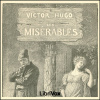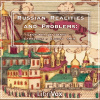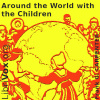Dorothy Richardson - Backwater (Pilgrimage, Vol. 2)
Dorothy Richardson
100%
Speed
Literary Fiction
733
Summary
«Backwater» is the second volume of «Pilgrimage,» a series of thirteen autobiographical novels by Dorothy Richardson considered to have pioneered the «stream of consciousness» technique of writing. In a review of the first volume in the series, «Pointed Roofs» (The Egoist April 1918), May Sinclair first applied the term «stream of consciousness» in her discussion of Richardson's stylistic innovations. Richardson, however, preferred the term «interior monologue.» Miriam Henderson, the central character in Pilgrimage, is based on the author's own life between 1891 and 1915. Richardson is also important as a feminist writer because of the way her work assumes the validity and importance of female experiences as a subject for literature. Her wariness of the conventions of language, her bending of the normal rules of punctuation, sentence length, and so on, are used to create a feminine prose, which Richardson saw as necessary for the expression of female experience. Virginia Woolf in 1923 noted that Richardson «has invented, or, if she has not invented, developed and applied to her own uses, a sentence which we might call the psychological sentence of the feminine gender.» In «Backwater,» the quietly iconoclastic Miriam Richardson undertakes teaching responsibilities at a girls' school in North London; finding it to be impossible to conform to socially-acceptable interpretations of life, she anguishes over such issues as marriage, religion, the nature of happiness, and family relationships, while she begins to widen her horizons in the world. ( Wikipedia, edited by Expatriate)
Authorization
By logging in, you agree to the terms and conditions.














No comments